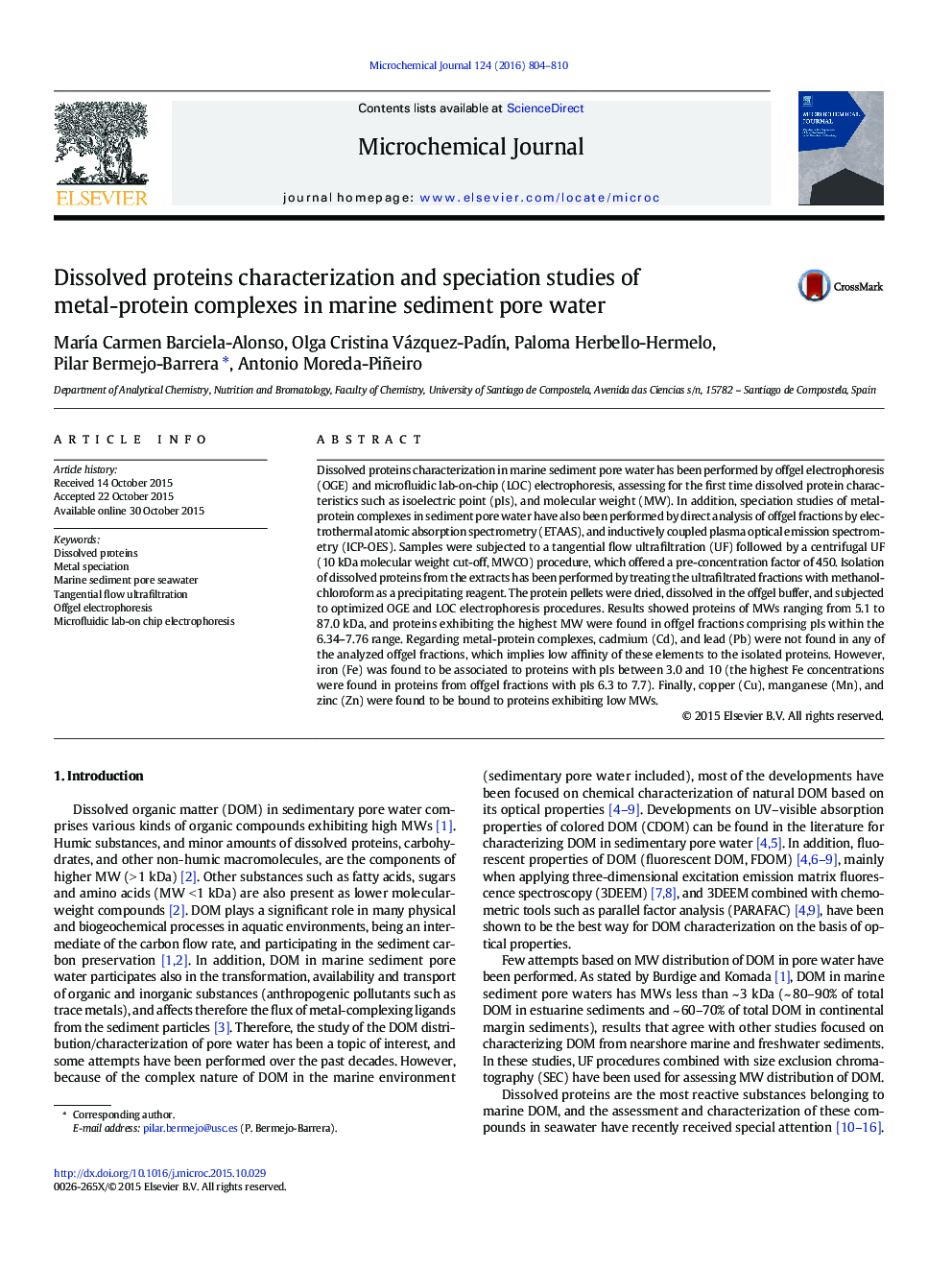| Article ID | Journal | Published Year | Pages | File Type |
|---|---|---|---|---|
| 7642568 | Microchemical Journal | 2016 | 7 Pages |
Abstract
Dissolved proteins characterization in marine sediment pore water has been performed by offgel electrophoresis (OGE) and microfluidic lab-on-chip (LOC) electrophoresis, assessing for the first time dissolved protein characteristics such as isoelectric point (pIs), and molecular weight (MW). In addition, speciation studies of metal-protein complexes in sediment pore water have also been performed by direct analysis of offgel fractions by electrothermal atomic absorption spectrometry (ETAAS), and inductively coupled plasma optical emission spectrometry (ICP-OES). Samples were subjected to a tangential flow ultrafiltration (UF) followed by a centrifugal UF (10Â kDa molecular weight cut-off, MWCO) procedure, which offered a pre-concentration factor of 450. Isolation of dissolved proteins from the extracts has been performed by treating the ultrafiltrated fractions with methanol-chloroform as a precipitating reagent. The protein pellets were dried, dissolved in the offgel buffer, and subjected to optimized OGE and LOC electrophoresis procedures. Results showed proteins of MWs ranging from 5.1 to 87.0Â kDa, and proteins exhibiting the highest MW were found in offgel fractions comprising pIs within the 6.34-7.76 range. Regarding metal-protein complexes, cadmium (Cd), and lead (Pb) were not found in any of the analyzed offgel fractions, which implies low affinity of these elements to the isolated proteins. However, iron (Fe) was found to be associated to proteins with pIs between 3.0 and 10 (the highest Fe concentrations were found in proteins from offgel fractions with pIs 6.3 to 7.7). Finally, copper (Cu), manganese (Mn), and zinc (Zn) were found to be bound to proteins exhibiting low MWs.
Related Topics
Physical Sciences and Engineering
Chemistry
Analytical Chemistry
Authors
MarÃa Carmen Barciela-Alonso, Olga Cristina Vázquez-PadÃn, Paloma Herbello-Hermelo, Pilar Bermejo-Barrera, Antonio Moreda-Piñeiro,
